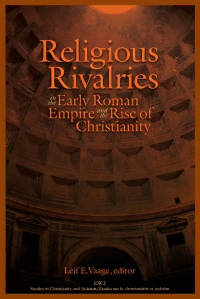
Religious Rivalries in the Early Roman Empire and the Rise of Christianity PDF
Preview Religious Rivalries in the Early Roman Empire and the Rise of Christianity
Contents Page: v Acknowledgments Page: vii Preface Page: ix Abbreviations Page: xv Part 1: Rivalries? Page: 1 1. Ancient Religious Rivalries and the Struggle for Success: Christians, Jews, and Others in the E Page: 3 2. The Declining Polis? Religious Rivalries in Ancient Civic Context Page: 21 3. Rivalry and Defection Page: 51 4. Is the Pagan Fair Fairly Dangerous? Jewish-Pagan Relations in Antiquity Page: 73 5. My Rival, My Fellow: Conceptual and Methodological Prolegomena to Mapping Inter-Religious Relatio Page: 85 Part 2: Mission? Page: 107 6. “The Field God Has Assigned”: Geography and Mission in Paul Page: 109 7. The Contra Apionem in Social and Literary Context: An Invitation to Judean Philosophy Page: 139 8. On Becoming a Mithraist: New Evidence for the Propagation of the Mysteries Page: 175 Part 3: Rise? Page: 195 9. Rodney Stark and “The Mission to the Jews” Page: 197 10. “Look How They Love One Another”: Early Christian and Pagan Care for the Sick and Other Char Page: 213 11. The Religious Market of the Roman Empire: Rodney Stark and Christianity’s Pagan Competition Page: 233 12. Why Christianity Succeeded (in) the Roman Empire Page: 253 Works Cited Page: 279 Ancient Sources Index Page: 305 Ancient Names Index Page: 318 Modern Names Index Page: 322
Description: